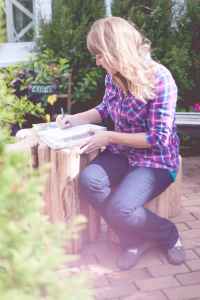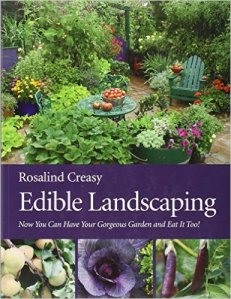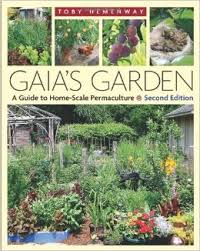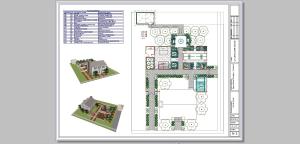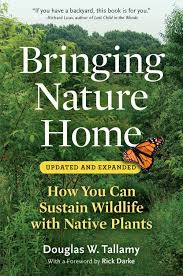85: Linda Kelso | Earth Friendly L K Landscape Design | Pittsburg, PA
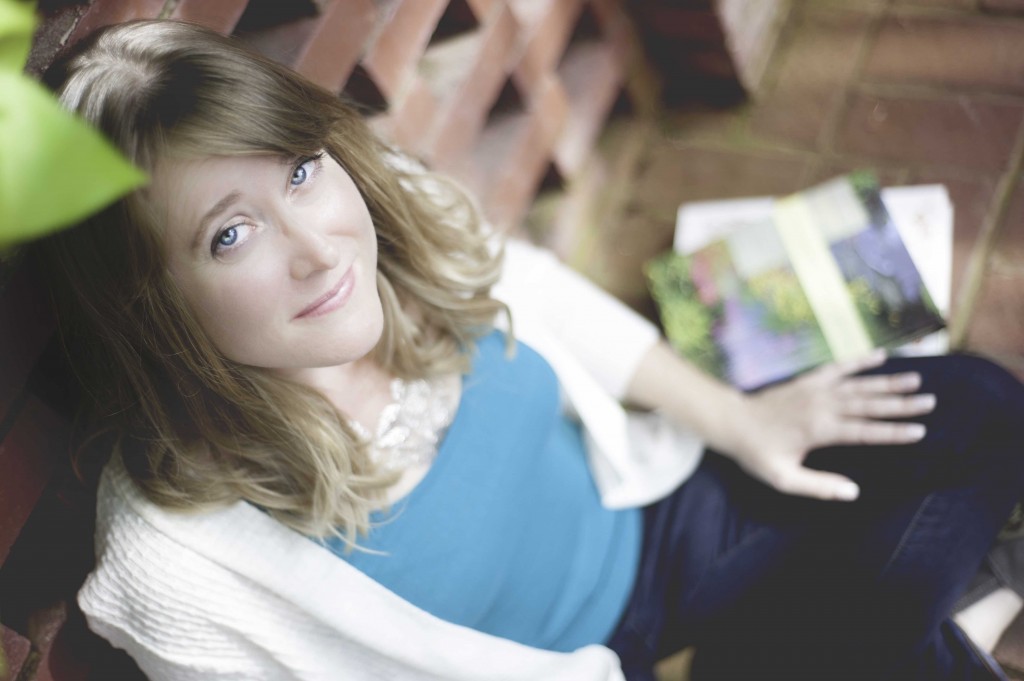
Linda Kelso is owner of LK Landscape Design where she helps people make their landscapes more beautiful, enjoyable, and earth friendly! Today she’s here to share with us earth friendly designs you can implement in your yard!
Tell us a little about yourself.
I’m a landscape designer, I live near Pittsburg, PA, I own my own business. This is my second year with LK Landscape Design. I specialize in using edibles as part of design and using sustainable or native plants.
Landscape design is my second career. I have a bachelors in Psychology, I spent about ten years doing administrative and office management kind of work. Originally I started into gardening as a hobby and it just evolved into this new career for me.
Tell me about your first gardening experience?
My parents always had a small garden, they would grow a few tomatoes or peppers when I was young. My first kind of moment when I connected with gardening was in the winter actually. My parents would receive seed catalogs in the mail, I loved to look at the pictures and imagine the garden I could create, and so, I remember one year I was probably 8-9 years old, and I got some of my dad’s very expensie, off limits to me, graph paper, I grabbed my crayons and colored pencils and I sat and designed my own vegetable garden. I remember doing that for a couple of years. I don’t think any of them made it into an actual garden, I don’t think my parents actually took those and made them into reality, probably because they were pretty elaborate. But that was my first connection to gardening.
What does organic gardening/earth friendly mean to you?
This definition is always evolving for me. Right now it means working with nature then fighting against it. I view nature as a system always that is always trying to maintina balance. I think if you try to work withint that system and maintain that balance you’ll end up successful. When we try to introduce outside elements
non-native insects
nature has to work hard to establishing normal again if it even can. Sometimes we use non-organic methods because they provide the short term easy solution but in a long term they actually cause more problems. So organic solves long term problems.
I have had a lot of guests talk about the health of our soil. And I just went to this conference and that was an underlying theme to protect and care for the health of our soils.
Who or what inspired you to start using organic techniques?
I think that its not just one person or event or thing, kind of been a slow progression
my parents always used a fairly organic approach.
they just had small gardens
they
I grew up gardening without chemical control.
the city itself really inspires me.
©Scarlett Sagraves/Sagravesphoto@gmail.com
The Phipps Conservatory in Pittsburgh has played a huge role in my new career.
Their classes and conventions focused on earth friendly or sustainable techniques. They just started a pilot chapter of the Biophilia Network. I think they are testing it out here first. The Biophilia Network is basically monthly meetings where you can listen to thought leaders and innovators in the organic sustainable movement. They’re like little Ted Talks. I really love those meeetings and attend wheneverr I can. You get to ask them questions an meet others in the
Pittsburg as a whole is there is a whole movement here for that.
Pittsburg to me, I’ve been reading about Pittsburg for like 10-20 years, they are the one of the biggest innovators in the US. They have a huge medical technology and have a huge medical center there right? and I just read something about how they are embracing the green movement. So I am not surprised they are innovators.
About 5 years ago I moved back here, and that’s when I transitioned into this new career.
TED: Technology, Entertainment and Design is what Ted stands for, if you have never listened to a TED Talk definitely check one out!
How did you learn how to garden organically?
Even though I’m a landscape designer, my whole history with gardening was with vegetable gardening. So when I went bak to school for a degree in landscape design. I really wanted to integrate some of that with what I do.
I discovered Rosalind Creasy. She does edible landscape design. She uses edible plants in her landscape designs. Her book is Edible Landscaping: Now You Can Have Your Gorgeous Garden and Eat it Too!
I started down this non-tradtional when I read her book. I started to take classes at Phipps Conservatory in sustainable design. I read other books about it, I decided if I was gonna do this for a living, I wanted it to be about more then earning money, I wanted to do something good and contribute to the environment and help it.
combinging ornamental landscaped. They can be vegetables, herbs, flowers. A lot of what she talks about, if you look a little bit into the permaculture movement, there’s this idea of plants doing double duty. Not just looking nice but having a purpose.
also this idea of n
not just about the tomato that you get, maybe letting things go to flower because some things produce really pretty flowers.
looking at the leaves of the plant
Rosalind Creasy explains it better then I do, she has a lot of books on the topic and a nice website.
Tell us about your landscape and what grew well this year.
About my parents landscape! They did an experiment for me!
They have about 2 and 1/2 acres of property. Whenever I design, I take into account the insects and other animals they support. So on my parents property part of it has always turn into this meadow area. So I asked my dad if he could stop moqing a part of that and I wanted to see if it would increase the number of bees and butterflies etc.
Always lots of butterflies and bees back there When the other neighbors plants stopped blooming, there were always lots of butterflies, moths, and bees,and lots of birds back there but my dad was also happy because it was less mowing for him!
Even simple things like that can make a difference to the animals that
That’s a pretty big piece of land isn’t it? So they must be out of the suburbs where they live?
more rural around where they live,
I don’t think they would get away with that
if you lived in a housing plan or a more suburban plan.
One of your blog posts recently was about the law and design right? Do you want to talk about that at all?
I was just writing that when you design
whenever you do anything on your property, you have to take into account, there are a lot of local ordinances, there are HOAs- homeowner associations. Sowhenever you design something you might think I want to build a deck, there are local ordinances. Sometimes when you hire a contractor, not always, but you have to read the contract carefully, if those ordinances are violated, you as the homeowner might be liable for that. As the homeowner you have to be aware, if you are building a deck or something make sure you are keeping within the law.
Our first investment property was little house in Cut Bank and I was told that even painting the door, could need a permit and we had put up a fence and some trees and built a walkway etc.
Is there something you would do different next year or want to try/new?
I want to use more permaculture techniques in my design. I’m just learning about permaculture now. I think it’s fascinating. It approaches gardening as a system, I kind of think about it that way anyway.
Working with nature in your own backyard. There is a structure called an Herb Spiral are just really beautiful and would look really good in a landscape so my goal is to start using that in the future.
What’s it called again?
An herb spiral. It’s sort of like a raised bed but instead of being like one level, multiple tiers of, it’s literally like a spiral that goes upward
that goes upward that creates little environments for each herb, on the sides so they have a little shelter. It’s really attractive
can put herbs, flowers…
I guess so… except upward.
like a snail shell?
You can make it any size you want. I think anything less then maybe 4 feet at the base would be difficult. I had a client, I was designing one for, the largest part at the base was about 8 feet and each section got smaller and smaller.
I never heard of permaculture till I started this podcast 8 months ago either.
There was a student in one of my classes! He was like you gotta look it up! I was like I’m so busy. When I finally had time to look into it, I was like this is amazing.
Kelly Ware has been in my most downloaded episodes. She’s talking about building a Permaculture Education Center down in Panama where she just moved.
My number one most downloaded episode and I think she is downloaded a lot because she talks about being strategic. I’m so not like that, I’m always standing there with the plant thinking where am i gonna put this.
So how do you start a design?
I always start by interviewing the client then also walking around the property. What I’m looking for is problems they’re having. Maybe there’s a drainage area, or an area where things aren’t growing very well. or maybe they have nosy neighbors and want more privacy or maybe they have a vegetable garden but deer are an issue. So I always start with what the client wants, needs and what problems they are having in their yard.
create a design based on those issues
A lot of times you can’t solve everything. I try to prioritize the needs and the wants, so they have a final design that doesn’t just look pretty but also it serves a purpose
I look at
say they have all these sunflowers they want to plant? How much space do you need? How much space will it need when it’s young but also how much space will it need when it’s grown. and what will it look like 10 or
People who put in shrubs gave them enough space when they were young
what does it look like but also what will it look like 10 years down the road… research and analysis before I ever pick the flowers or other plants out.
People wonder…
if you hire a landscape designer
why would it be so expensive,
they don’t see that behind that there is a lot of research and a lot of analysis that goes into that and a lot of expertise.
It can make a big difference not just money but also frustration in the long run. Probably a big one is for trees. What kind of things do you think about for trees?
I think about the final size of the tree… potential
In terms of the final size I don’t want to plant a 100 foot tall maple or oak tree right next to a house, if that tree ages, or gets damaged, it could damage house if it falls.
a tree that is going to produce a lot of seeds, maple produce a lot of seed can get invasive…
Beyond that I also want to consider how can they help the home owner with their energy bills, can provide shade and if it loses it’s leaves it will let sun in the winter. And you can do that with shrubbery too. When chosing a tree, you have to think about safety, the mess that it might create, or can it be invasive or can it help with energy.
Also the leaves would create compost and passive solar is so huge, people don’t always think about energy saving and where you windows are where your trees are can make a difference in your energy bill.
Tell me about something that didn’t work so well this season.
When I started mn business, Ithoutght I’m just gonna create all edible, or all native, or completely sustainable designs
my clients aren’t ready for that yet, maybe popular landscape plants
mixed with some sustainable, ediclbe plants. is a pretty different way
step by step process I totally get, and if you’re a homeowner, it’s a big risk to pay for and use a design that is different then what the neighbors have. I would rather have a landscape with a few natives or edibles then none at all. I think as clients see how they work and that they aren’t completely off the wall
that’s the sustainable house, it’s not like that at all.
Like whoa what did they just do?
There’s a lot of education with it! As I develop relationships they become more open to using more earth friendly techniques. There is a lot of interest in using raised beds, composting and avoiding pesticides or herbicides. When I do a lot of maintenance work, I try to teach clients they have a lot of questions. try to answer them from a sustainable
Honestly I get a lot of pruning questions…
That’s part of my business, I prune and weed and things like that. So a lot of people don’t understand the right time to prune. I don’t know if it’s like this where you live but in the past generation ir so there was a movement to prune things into geometric shapes.
If you prune a plant like that continuously you can end up killing the plant, and it’s more susceptible to disease and pests, so when a lot of people hire me, I can reviatalize those plants and get them to grow in a way. So I get a lot of questions like why is pruning in the plant into a box killing it? I get some about controlling weeds without the use of herbicides and that sort of thing. Those are probably the most common.
Russ Metge from Salt Lake City, he’s been my downloaded episode 26 talks about pruning trees. Dave Salman down in New Mexico talked about pruning flowering trees in episode 50 .
Something that you find is easy to grow and is generally successful every-time.
I really like to use herbs as ornamentals. They’re easy to grow, and maintains. they’re really pretty
Especially if they
bushy
how sage and rosemary look too
I planted swiss chard as an ornamental,
very little work, the plants were huge by the end of the season! If somebody wants to start incorporating edibles, herbs are a great way to start!
I agree and they have that aromatherapy thing, and the bees love them. First they go to my chives which blooms in the spring and then they move on to my oregano and my sage. Does Rosemary grow flowers? I just got one at the Farmer’s Market this year.
I just planted one this year as well, I really like the look of the leaves. It’s good mix up different textures. Rosemary has this completely different the leaves are just little needles and I like the contrast of that with other broad leaf plants and they smell good too!
And the thing you want to do is grab a leaf and crush it in your hand to smell it.
Something you would steer new gardeners away from that you find is typically challenging to grow.
My answer to that is Japanese Barberry. It’s like my plant nemesis, I really hate it. If you’re not familiar with it, it’s a shrub that’s covered with these tiny sharp painful thorns. People like it because it’s really low maintenance,
pros do not outweigh the cons
Nurseries were recommending it to homeowners. I see it in almost every landscape
As someone who has pruned it
need leather gloves
splinters, really hard to get out
I have a coworker, she’s had a barbary thorn in her arm for years, they’re painful. Plus there’s been some research that they provide the sort of environment that ticks like to breed in and they are also invasive and birds eat the berries, so they get distributed anywhere birds grow so they can crowd out native plants…not my favorites, and I would not recommend it for landscape.
Which activity is your least favorite activity to do in the garden.
Mulching in my own garden it’s not a big deal, it’s in a smaller space.
When I do it for clients it’s on a large scale
it’s a stress fest for me! I’m not gonna lie!
when you mulch for someone, you measure and calcuatle what you need
I’m always so paranoid, is the delivery guy gonna be able to find the place, and is he gonna be able to dump the mulch? I’ve never had a mulch job go wrong but it is a good work out and a big job, at the end of the day my body is tired! For clients usually a wood chip mulch.
in my own garden sometimes leaves are what’s available around where live.
We just got a chipper. That’s what I was gonna say, that we had 20 acres of Christmas Trees, and he would prune the trees, and the year he was gonna sell em, he would go around each spring pruning the trees. Back tot he mulch we’re excited to have more wood chips, and we’re excited to chop up the corn stalks and sunflowers and things we haven’t been able to compost before so we’er excited to create more mulch and things for our property. For me the tough one has always been finding soil, or manure for the beds. If they’re cows that ate weed-free food you don’t want it. Peggy Jane Ousley was a guest on the show in the beginning and we have a problem in our valley, they’re using that manure, and their stuff is not growing, almost getting burnt from using it.
Our parents where they live is farmland, but I never thought to look into that before.
I learned a ton since I started this podcast. I always thought our chickens were organic but I can’t afford to buy them organic chicken feed, and like I buy broccoli all year round and I can’t afford to buy organic broccoli so they eat that. But I don’t sell our eggs yet.
I look at doing something is better then doing nothing. It’s like an evolution to do what you can do it at any time.
Our chickens are now free. The rooster sleeps in a doug fir tree about 20 feet up and the chickens sleep on the fence now to be near him.
Our neighbors got a rooster, which technically you’re not supposed to have in the city, but he would escape into our yard and we’d have to herd him.
Our rooster marches our chickens around our fence line.
What is your favorite activity to do?
I really enjoy pruning and teaching people about pruning. It’s almost a lost skill and it is an art. When you do it well you create a beautiful plant and you create a healthier plant. It’s always a very peaceful type of thing and also an artistic thing.
Are there any tips you would give listeners?
TIps
Yes, it’s important to step back every so often and look at the plant as a whole,
don’t prune in one place, just keep stepping back and looking at it, it gives you a perspective on what you’re doing so you don’t end up with something lopsided. If you’re starting to learn how to prune, don’t use electric anything, it will go to fast for you probably, it will be too easy to lop off too much of the plant. Just use hand pruners or use hand shears. Plants are pretty tough and they want to survive
it’s fairly hard to kill a plant but if you do that tight geometric shape year after year, after year. So don’t be afraid, read a little bit aobut the plant and ‘look at how it’s supposed to look naturally
Linda Kelso computer generated design
Tell us about the best design or favorite project you worked on.
Ill tell you about a project i got to do in class. You never had a budget so you could go all out. Match this colonial style house. I got to go crazy and have fun with it. I had a chicken coop, a whole raised bed garden section, a whole work area, if you look at early American designs or even some British landscape design from the past. You had, your landscape design had to suppor your life, you ha to be growing things that you could eat, you needed chickens.
those older designs I like that, they integrate all of that. I love things that are beautiful but I like things that are practical too. When I talk to clients I’m always thinking about those practical things I can work into them that are also pretty and fun!
What is the best gardening advice you have ever received?
From my dad! He would tell me don’t overwhelm yourself and start small… he would tell me that in terms of gardening and in life in general. When I was younger maybe not so young and I would like to try 20 new plants at a time, and try 20 new projects. My dad would always reign me in, try 2-3 new things and observe what the plants do so you can try them again next year and then try more new things.
I share this advice with clients, especially vegetable gardening, they will look through the catalogs and want to try all these things. And I’ll be like start with five…
So what does your dad do?
He worked at a company called Westinghouse. He worked in their nuclear sciences division, a technician there. He doesn’t even have a college degree but really scientifically minded, has this intuitive senses of how to make them work, and improve them and fix them. I always have this desire to experinment and make things up and
he was an engineering involved…
I have a friend starting a podcast called the Intuitive Business he might make a good guest on.
A favorite tool that you like to use? If you had to move and could only take one tool with you what would it be?
I was thinking,
There’s 2:
My Felco Pruners. I love them. I use them on every maintenance job, they stay sharp for a long time, and stand up to a lot of abuse. A home gardener, a pair would last you a long long time. What I like too, they make a version, which is a little smaller, which makes it a lot more comfortable to do a lot of pruning work.
Deluth Dry on the Fly pants… my work pants… I love them. Every maintenance job I’ve worked on , the material they are made of is stretch and strong.
I worked for a garden maintenance company and I wore jeans, and my jeans just wore out after a couple of month and I have had these pants for 2 seasons now and they look perfect don’t have any stains or possible , because they are so lighweight I’m comfortable in them I can keep my legs covered. Safety ….
A favorite recipe you like to cook from the garden?
Im always trying new recipes, I’m always experimenting, which probably drives people I cook for crazy because it never tastes the same. I don’ t have a favorite recipes but I have favorite flavors. I like Thai, Mexican, and Indian food. And a lot of those recipes you the things that I grow. Like tomatoes or peppers or lemon grass or cilantro. Grow those things in my garden so I have access to fresh ingredients for those recipes.
The LK Design Recipe
Basically like a Thai Peanut Sauce a quick and dirty Thai Peanut Sauce.
I take a can of coconut milk, add some peanut butter, and a sweet chili sauce, put a little bit of that in, I mix that up, warm it up, lemon grass… it gives this nice subtle lemony flavor.. it’s literally grass, you cut it at base, and peel off the outer layers, and when you get to the middle of grass stalk it tastes lemony. I let it boil for a while and it infuses that flavor, and it’s good on rice or noodles and I’ll put cilantro on top. Sometimes I get a really big craving!
The Wrap and Roll in Whitefish has a Thai Peanut Wrap… mmmm!
I’m like Zone 6, for me it’s just annual, it looks like a decorative grass… just this huge, grew to about 4-5 feet tall. It’s really sharp, I didn’t realize that at first and I reached in to cut a stalk. You might want to wear gloves, be careful when you go to harvest it…We haven’t had our first frost yet, but it’s getting close, so I’m gonna cut a lot of it off at the base, and freeze it, you just need one plant…
A favorite internet resource?
I really love Pinterest, I get a lot of design
I like to look at different pictures, and get inspiration form that. I have a gazillion landscape design and boards… I’ll create a specific board for them….
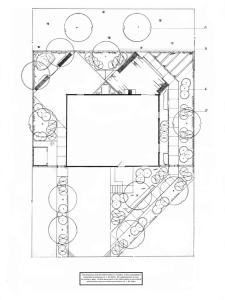
A favorite reading material-book, mag, blog/website etc you can recommend?
I really like Garden Design Magazine, just a gorgeous publication. It’s targeted at designers, but there are no ads, I think a homeowner would get a lot out of it too. In the back part are sections for different areas of the country… design ideas for specific fro where you are. You know those coffee table books you could use it for that.
Edible Landscaping: Now You Can Have Your Gorgeous Garden and Eat it Too! by Rosalind Creasy!
I also love this book Bringing Nature Home by Doug Talamne, which is good about why using Native plants is important.
Gaia’s Garden By Toby Hemenway about permaculture that has clear accessible resources.
You can check out my page of books recommended on the Organic Gardener Podcast here.
If you have a business to you have any advice for our listeners about how to get started in the industry?
I would say if you are thinking about it, try to find a summer job with a garden maintenance or landscape design, important to learn the business sides of things and get some hands-on training, you’ll know if you’ll like it and if it’s something you want to turn into a career. Because designning and doing it for someone else for money is very different feeling then doing it for yourself. I would also say take some classes. You don’t need a degree it is important and the whys, behind why you prune at a certain time, or knowing how to identify certain plants. There was a book that was helpful to me.
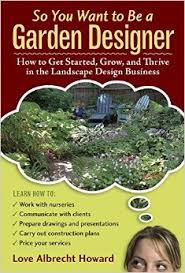 So you want to be a Garden Designer
So you want to be a Garden Designer
Its a really comprehensive guide. about all the things a landscape designer might do and how you might approach it. Any body who wants to do this business you need to do this book. Find other local business or communities online, people who can inspire and encourage you and keep you accountable. Nobody’s gonna understand the trials and tribulations of owning your own business.
I just got an accountablitiy partner in my podcasting group and he’s probably been on my website more than anybody and given me great concrete advice to move it forward.
Final question- if there was one change you would like to see to create a greener world what would it be? For example is there a charity or organization your passionate about or a project you would like to see put into action. What do you feel is the most crucial issue facing our planet in regards to the environment either in your local area or on a national or global scale?
So, I think there are so many pressing issues, out there, and sometimes it can be so overwhelming or discouraging to think about all of them but I always think we as individuals can do simple things in our own backyards to help solve or at least alleviate these problems.
Troubling deciine in the pollinator population. It’s hard to go out and see fewer bees and butterflies. People are really worried about
Movement to plant milkweed. see butterflies around it, I already have something for butterfly bush. Don’t lay eggs on it. They only lay their eggs on milkweed. The butterfly weed, doesn’t support whole life cycle of maonarch.

There’s a simple solution. You don’t have to change your whole yard, you just need to plant some milkweed, every homeowner can do that. IT can
A lot of that for simple steps and plant these certain plants, or you can stop using pesticides. So I’m a real fan of small steps in the right direction and educating people.
feeling empowered…
Do u have an inspiration tip or quote to help motivate our listeners to reach into that dirt and start their own garden or earth friendly landscape?
Attitude is imporatnt. not a succed or fail. Your onna make mistakes you can learn from them and keep trying. As my dad tole me Keep it simple and start small.
How do we connect with you?
They can visit my website LK Landscape Design
email me: linda@lklandscapedesign.com
Linda and I met through one of my all time favorite podcasters, Biz Women Rock Podcast!
OGP is dedicated to encouraging gardeners and people who want to grow food and flowers to choose an organic approach and helping you create your very own organic oasis.
The Organic Gardener Podcast is a participant in the Amazon Services LLC Associates Program, an affiliate advertising program designed to provide a means for sites to earn advertising fees by advertising and linking to amazon.com

If you like what you heard on the Organic Gardener Podcast we’d love it if you’d give us review and hopefully a 5 star rating on iTunes so other gardeners can find us and listen to. Just click on the link here:
https://itunes.apple.com/us/podcast/organic-gardener-podcast/id962887645
If you have any comments, questions, guests you’d like to see, or topics you’d like us to cover please send us any feedback positive or negative. We’re here to serve our audience and we can only improve with your help!!! Thanks for visiting Mike’s Green Garden changing the world one garden at a time.

